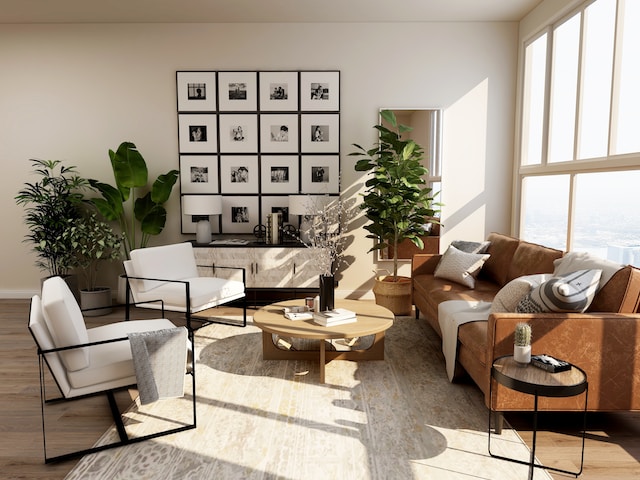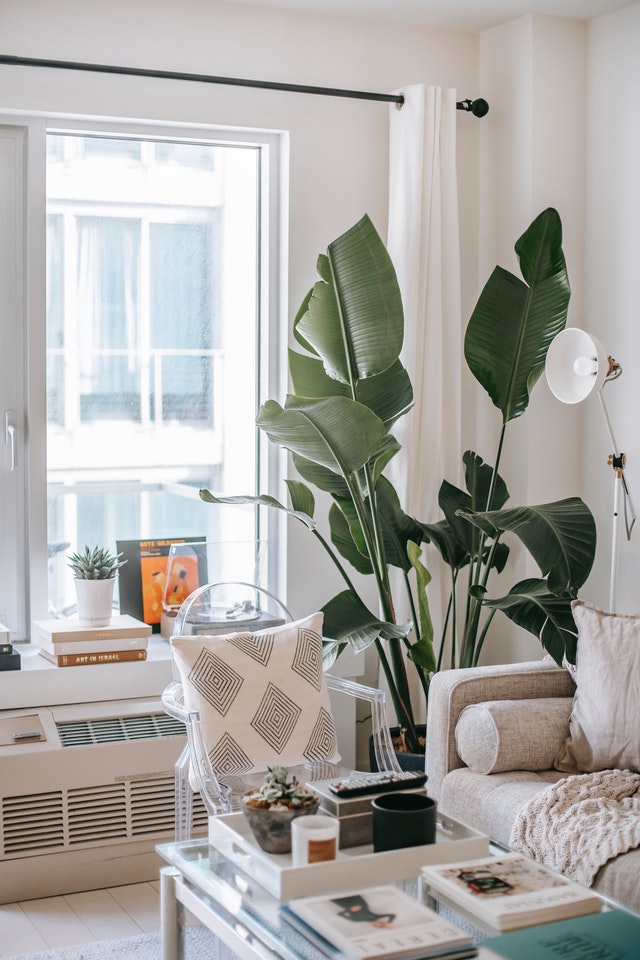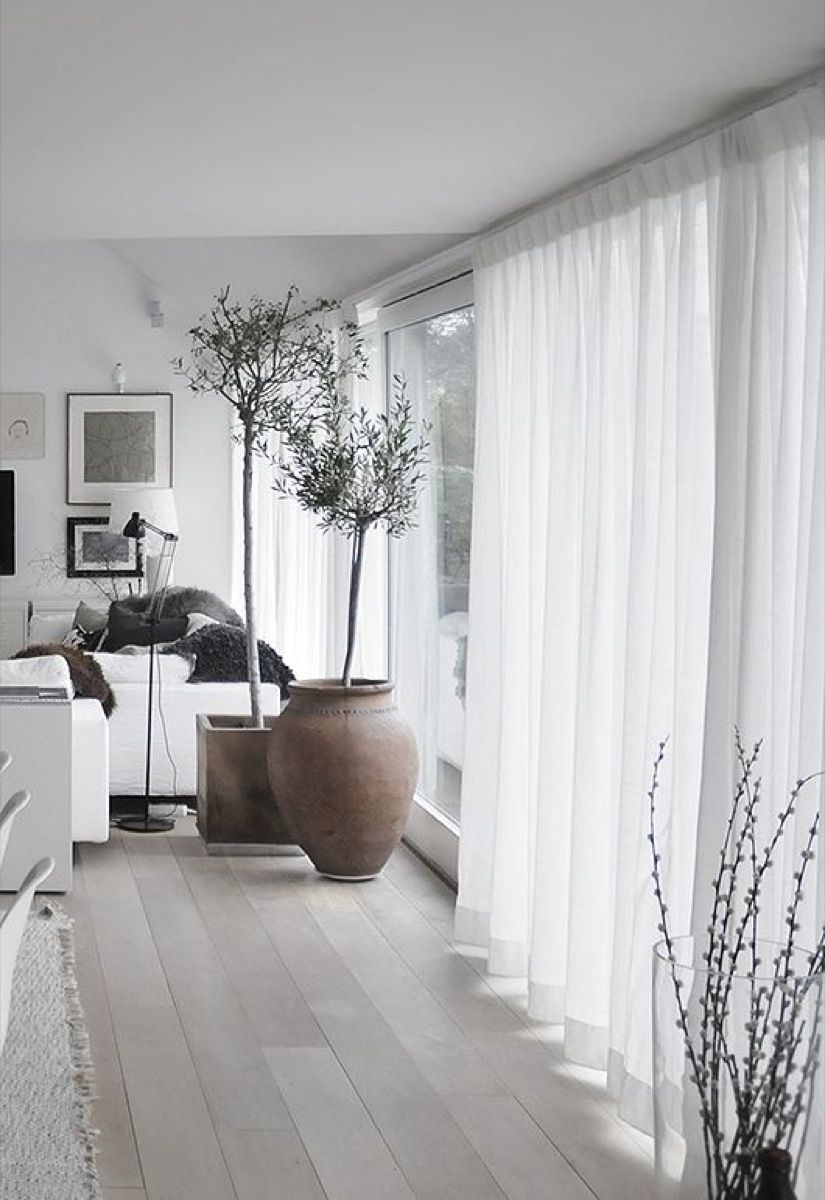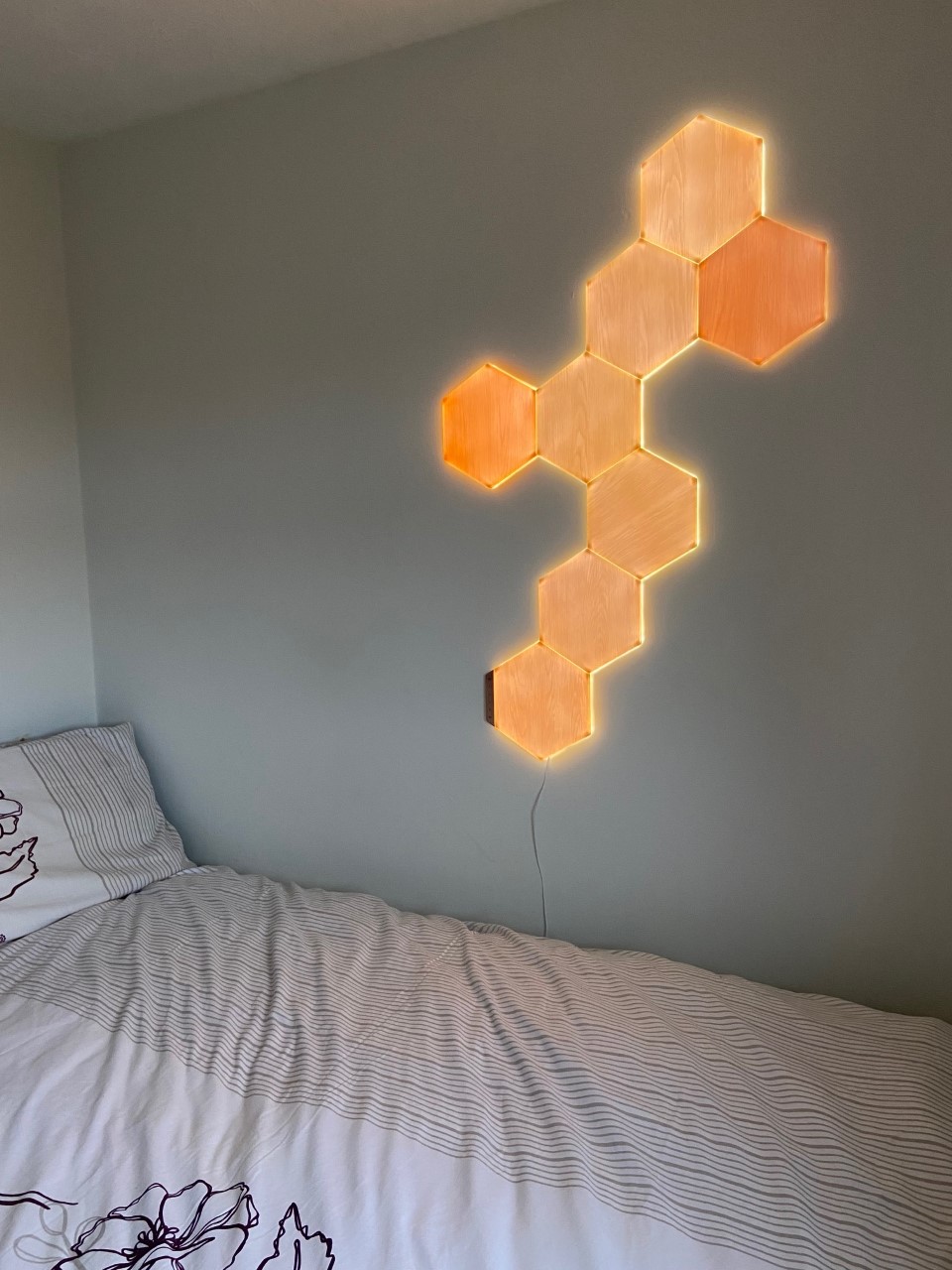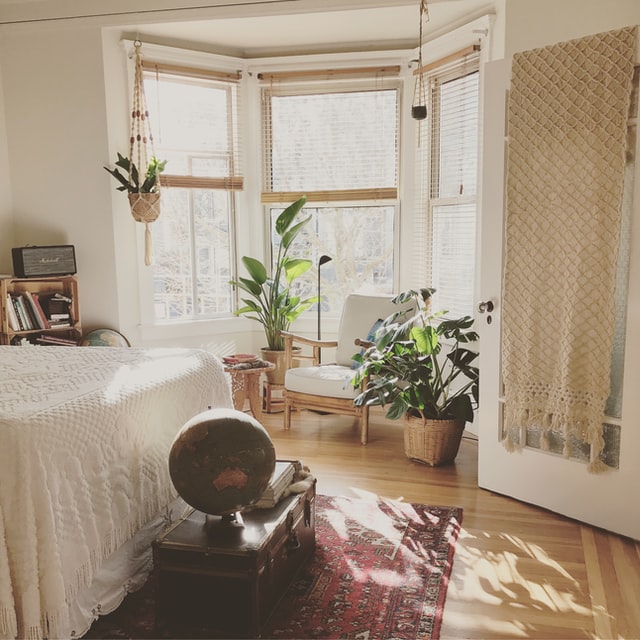The Ultimate Guide: How To Mix And Match Sofas And Chairs
Mixing and matching for our home interiors comes up a lot! It’s often a sticking point throughout different areas of the home. We’re trying to get away from the matching and uninteresting formal look. Mix and match living room living room pieces, give us a natural “lived in personalized look” without it being “put together”.
One way to achieve that look in the living room is to experiment with your furniture. And to get that feel for your family room here’s a guide on how to mix and match sofas and chairs.
1. Know Your Design Style
Having a mood board is always the best start off position to know what the style of your living room should be. Even in mixing and matching furniture there should be some sort of restraint. If you’re going for an eclectic or maximalist design you’ll be able to break a few more rules.
But if you want a Scandinavian style living room there’s a certain style and look you’ll be after, even when mixing and matching your furniture.
If there is no particular style you’ll be relying more on your instinct and what feels right to you. But it’s still good to get an idea of what you’d like it to look like. So see what inspiration you can find first.
Finding Inspiration
When it comes to mixing and matching sofas and chairs, finding other sources of inspiration is always helpful.
- Pinterest: A favourite for home inspiration!
- Magazines publications
- Friends’ homes: Visiting friends who have similar tastes or interests may give you some great ideas on how they’ve successfully mixed furniture pieces within their own spaces.
2. Choosing an Anchor Piece
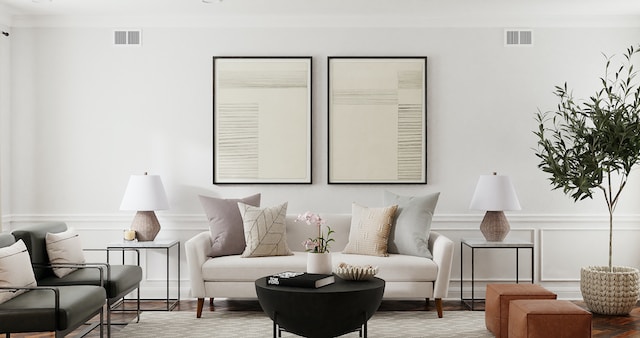
This focal item should be something that captures your attention and sets the tone for the rest of the space. This might be a furniture piece you already have in your living room.
It’s usually better to focus on the larger piece of furniture first, as that will naturally be seen first. Make sure it’s a comfortable sofa you love and it works for your space. No matter the colour or the pattern, everything else around it will be to compliment it.
Statement Sofa Selection
Your anchor piece could be one of those eye-catching sofas. When choosing this central element, consider factors such as size, shape, fabric type (e.g., leather or velvet), and overall style (contemporary vs traditional). Keep in mind that this sofa will dictate how you choose additional seating options like mismatched chairs.
Your main seating piece could be a loveseat, a long couch or a sectional sofa. You’ll know which piece is best suited from the size of your room and your personal preferences.
Accent Chair Options
If you prefer to have your main seating area consist of matching furniture but still want to add some flair with mixed pieces, consider selecting a striking accent chair instead.
These can come in various styles – from modern swivel chairs to classic wingbacks – allowing you to create visual interest without overwhelming the space.
To ensure cohesion between all elements involved when mixing different fabrics and patterns on both sofas and chairs alike; opt for complementary colours based on their compatibility according to colour theory.
- Fabric Sofas: Choose high-quality materials like linen or cotton blends which are durable yet comfortable enough for everyday use.
- Mismatched Chairs: Opt for contrasting shapes/styles while ensuring they complement each other through shared colour schemes or similar design features.
- Interior Design: Make sure your chosen anchor piece aligns with the overall style/theme of your living room to create a harmonious environment.
When selecting an anchor piece, consider the size of your space and how it will fit with other furniture. Mixing complementary colours, shades and designs is a great way of keeping some continuity in the space.
3. Contrasting Furniture Ideas

I think where most of us go wrong in combining different pieces for our living room, is trying to pair furniture that’s similar but from different collections. Quite often a strong contrast is needed among the furniture pieces to make it obvious that they’re not supposed to be matching.
A contrast doesn’t mean over the top or in your face. Here are a few ideas in where you can use contrasting furniture to your advantage:
- A contrast in furniture design style:
The overall shape of the furniture. A rounded back accent chair next to a linear sofa. The style of sofa a two seater sofa and a bench cushion sofa.
The contrast of shape can be in the arm style of the pieces too. You can pair a slope arm sofa with track arm or armless accent chairs. This can mean mixing vintage with a new furniture piece as well.
- Contrasting the leg style:
A slipcovered sofa or a platform sofa next to a wooden legged accent chair.
- Colour contrast:
A dark colour next to a light colour. Or a bright colour next to a neutral colour tone. This works far better than trying to get a colour match on two different seating pieces. It saves you a lot of time and energy in even trying.
- Pattern contrast:
A solid neutral coloured sofa next to a patterned chair.
Another option is to contrast patterns in scale. Mix and match a large pattern with a small scale pattern. If you like this idea try using complementary colours. Or pick a colour from the large scale pattern and match the colour in the small scale pattern. That way there’s unity between the two patterns through the colour choice.
- Fabric and material contrast:
A linen sofa next to two leather, velvet or rattan accent chairs. Playing with the textures of materials for example smooth and shiny vs. soft and nubby.
- Design detailing:
Tufted back sofa next to a tight back or cushion seat sofa.
And all these apply vice versa. Try can also use a couple of these contrasting ideas putting two mismatched sofas together. There are so many different ways to play around with it.
Tips
Use one two contrasting ideas depending on the style you’re going for:
For a more subtle mixing and matching, use contrasting materials and fabrics in neutral colours. Or keep it really simple by contrasting leg styles along with arm shape. And the style of sofa. Like a slipcovered sofa with tight back chairs to keep things simple.
For a bolder design, a contrasting colour or pattern is going to stand out a lot more.
If you’re using bold colours or patterns together, always get fabric samples first. Lay the swatches next to each other and see how you feel before committing to your choice.
Patterned upholstery and unusual colour fabric options can often end up a custom piece. Which means more pricey and harder to return.
4. Match
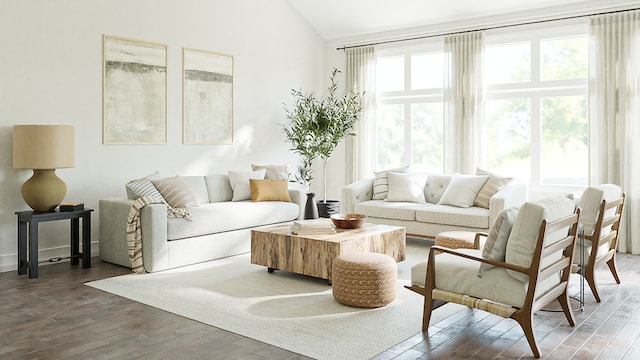
Once you’ve chosen a couple of ways to contrast your sofa and chairs, you can think about how you can match some elements. One of the main ways to to keep the design cohesive is choosing the same colour for the furniture.
If you have a more open neutral space you can get away with totally contrasting your sofa and chairs. As long as it keeps to your chosen design style.
5. Scale of Furniture
It’s a good idea to keep the scale of the furniture the same.
Generally speaking that means having the seat depths and seat height the same. This keeps everyone sitting at similar heights when in the same area. So it’s not awkward when sitting and talking.
You don’t want one person having to sit up straight and another person curling up on the sofa in the same seating area.
Measuring Your Space
Always make sure to measure your space before purchasing any new furniture items. This will ensure that your sofa and chairs fit perfectly within your living room without overcrowding or leaving too much empty space. To accurately measure your room:
- Accurately measure the length and width of your room, taking into account any architectural features such as windowsills, doorways or built-in shelves.
- Note down any architectural features such as windowsills, doorways, or built-in shelves which might affect where you place furniture items.
- Create a simple floor plan sketch including these measurements – this will make it easier when arranging potential layouts for sofas and chairs later on.
Making sure the pieces of furniture fit is key before trying to mix and match anything!
FAQ’s on How to Mix and Match Sofas and Chairs
How to Mix and Match Sofas and Chairs
Choose an anchor piece, such as a sofa or large chair, to set the tone for the space. Experiment with colours, patterns, fabrics, textures, and furniture sizes to create visual interest while maintaining balance. Use accessories like throw pillows or blankets to tie everything together.
Do Sofas and Chairs Have to Match?
No, sofas and chairs don’t have to match perfectly in a living room. Mixing different styles can add character to your space while still creating cohesion through complementary colours or patterns. It’s essential that the pieces work well together in terms of scale but matching them exactly is not necessary.
Is it Okay to Mix and Match Sofas?
Yes, it’s absolutely fine to mismatched sofas in a living room as long as they complement each other in terms of colour scheme or style theme. Consider using similar materials or design elements so that they blend seamlessly into your overall decor without clashing.
How to Mix and Match Chairs in a Living Room
Mixing and matching chairs can be done by choosing contrasting styles that share common features like colour schemes or materials; this will help maintain harmony within the space despite their differences.
That wraps up the ultimate guide on how to mix and match your sofas and chairs.
Chloe

